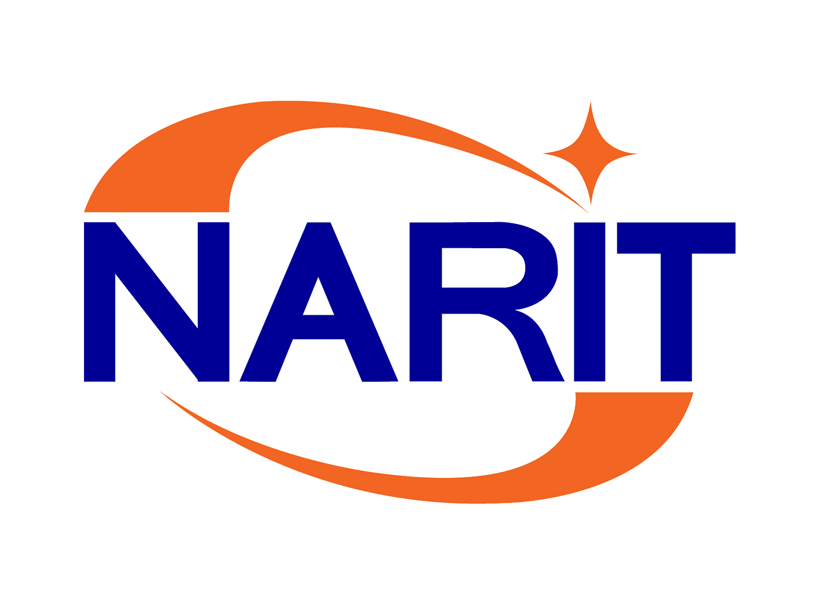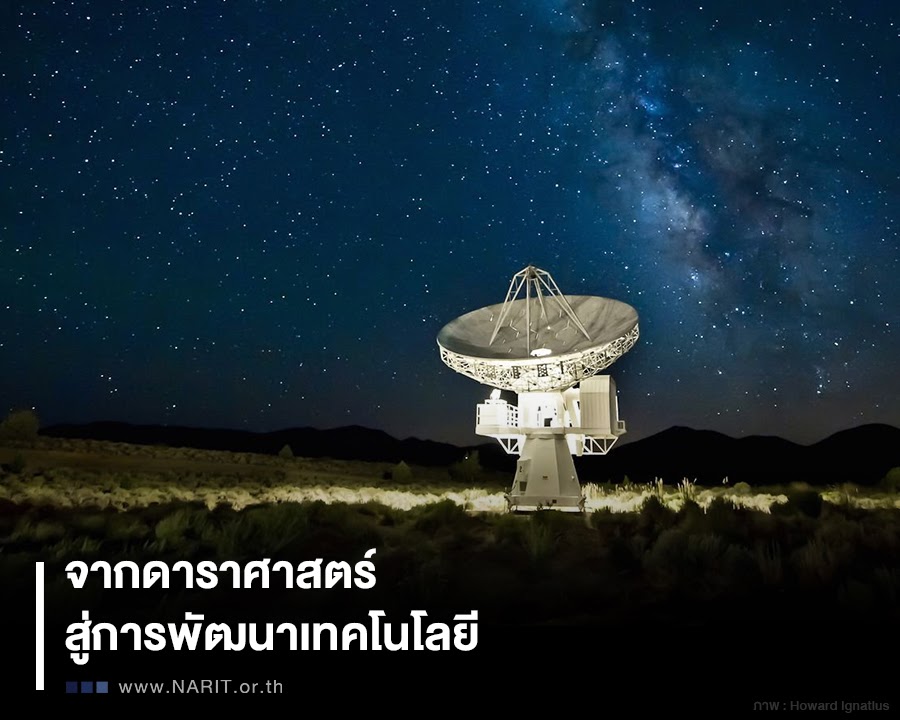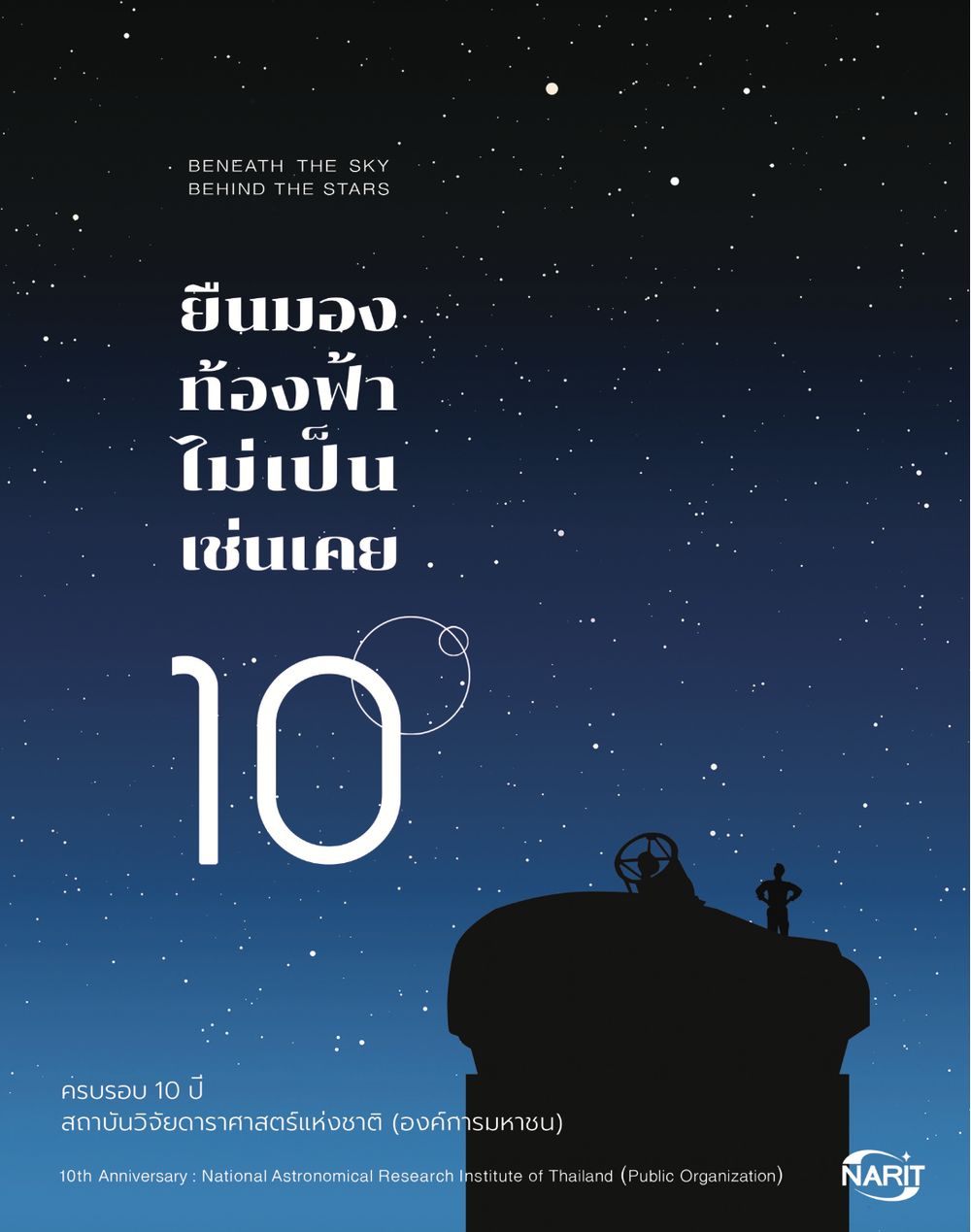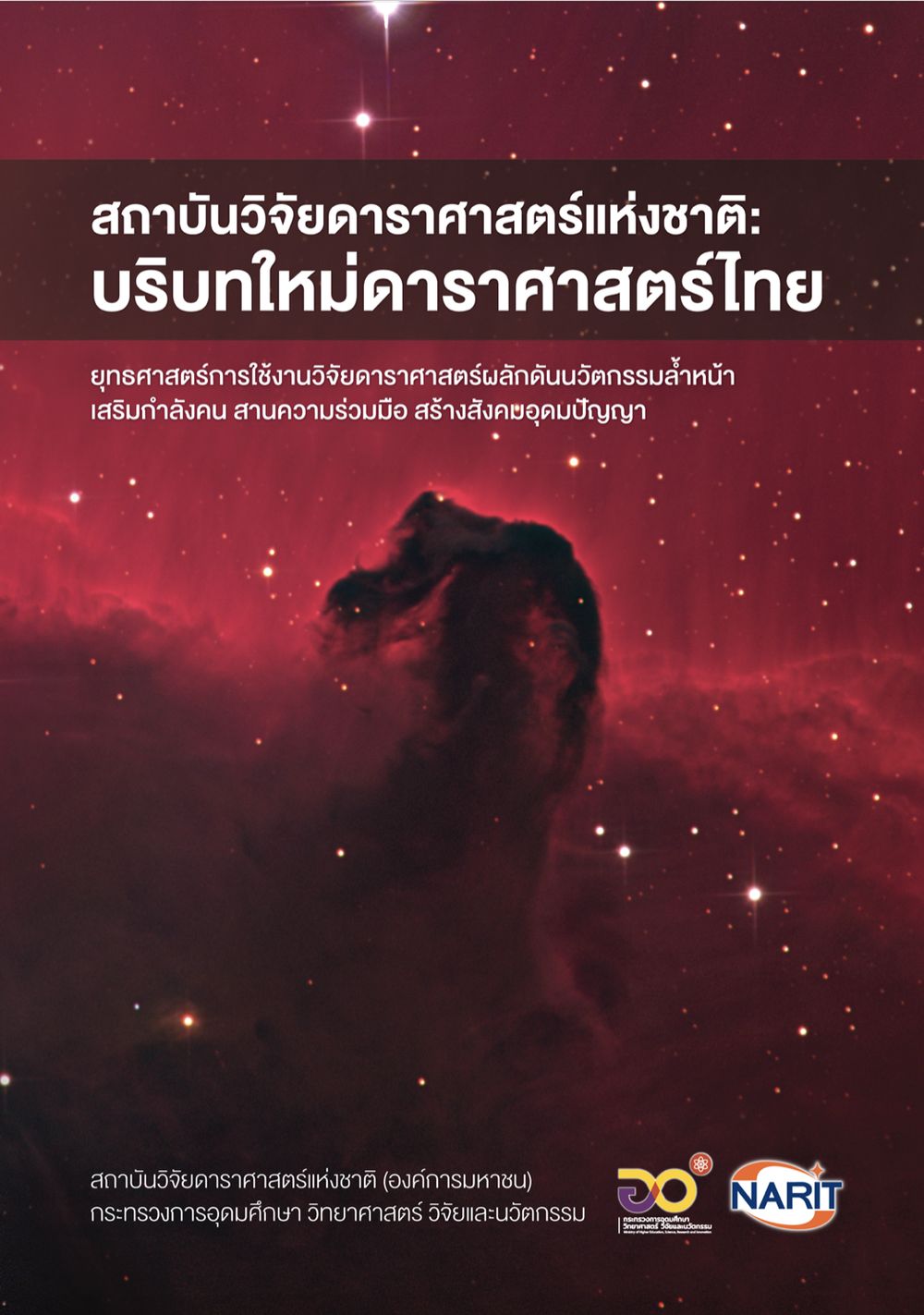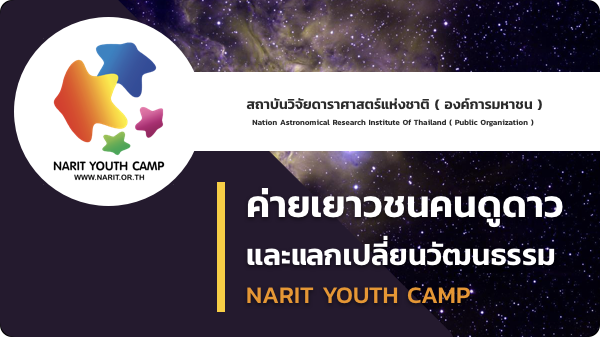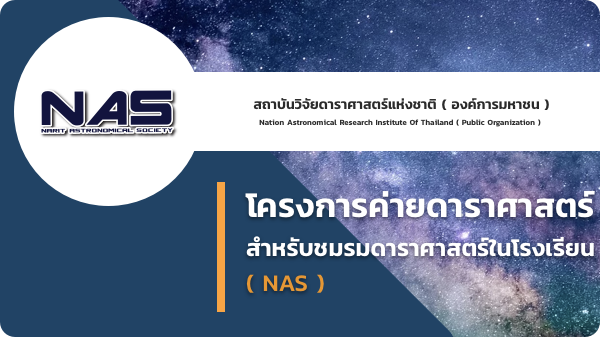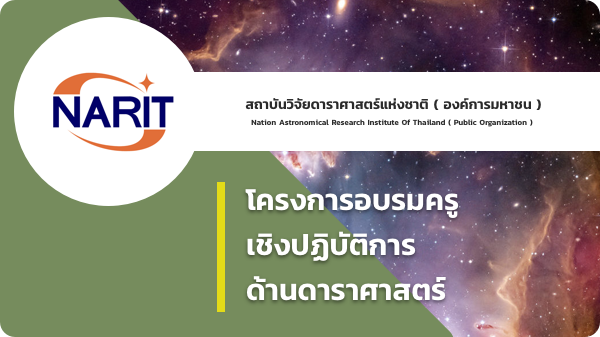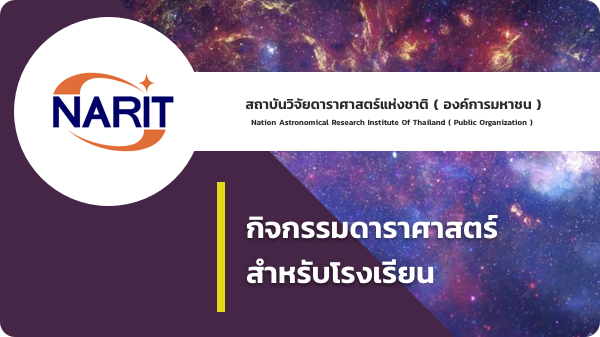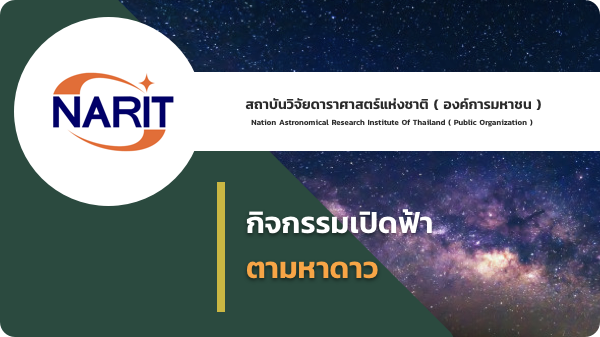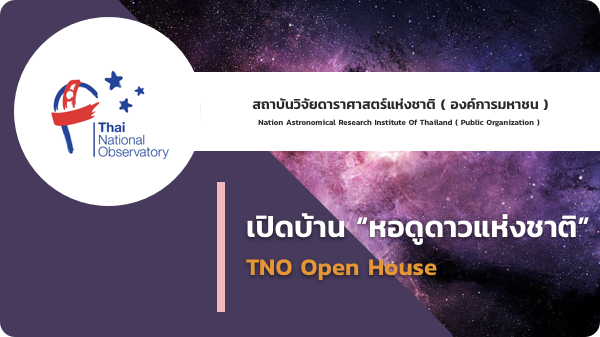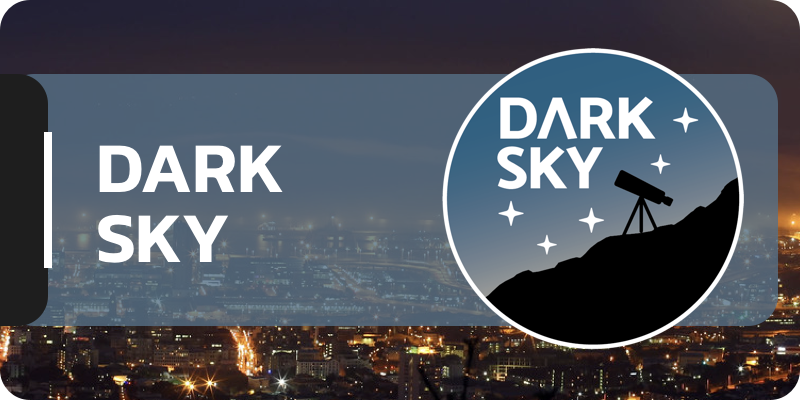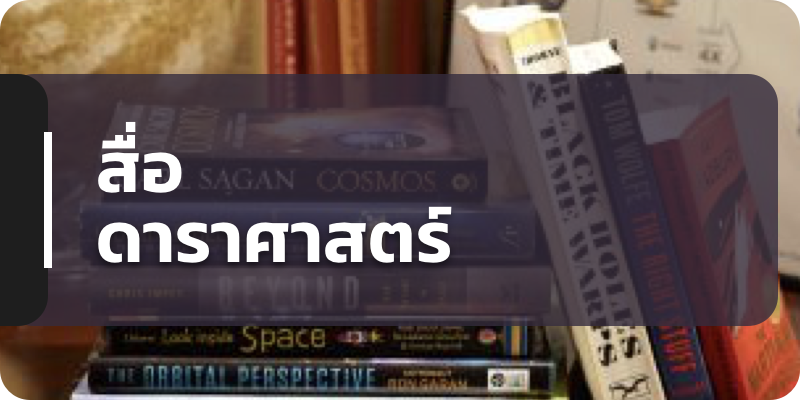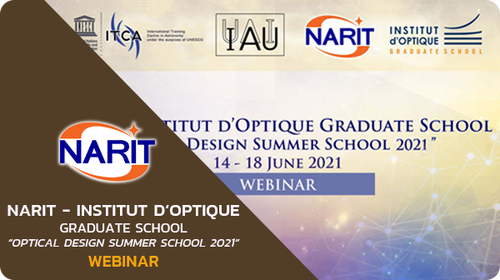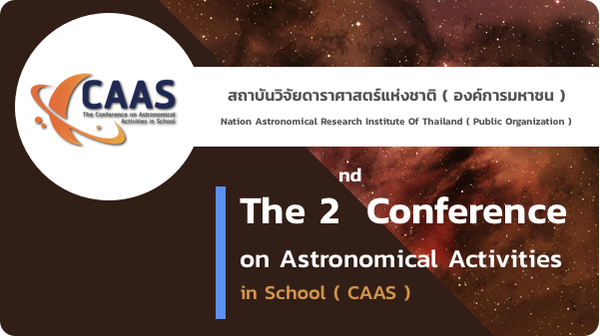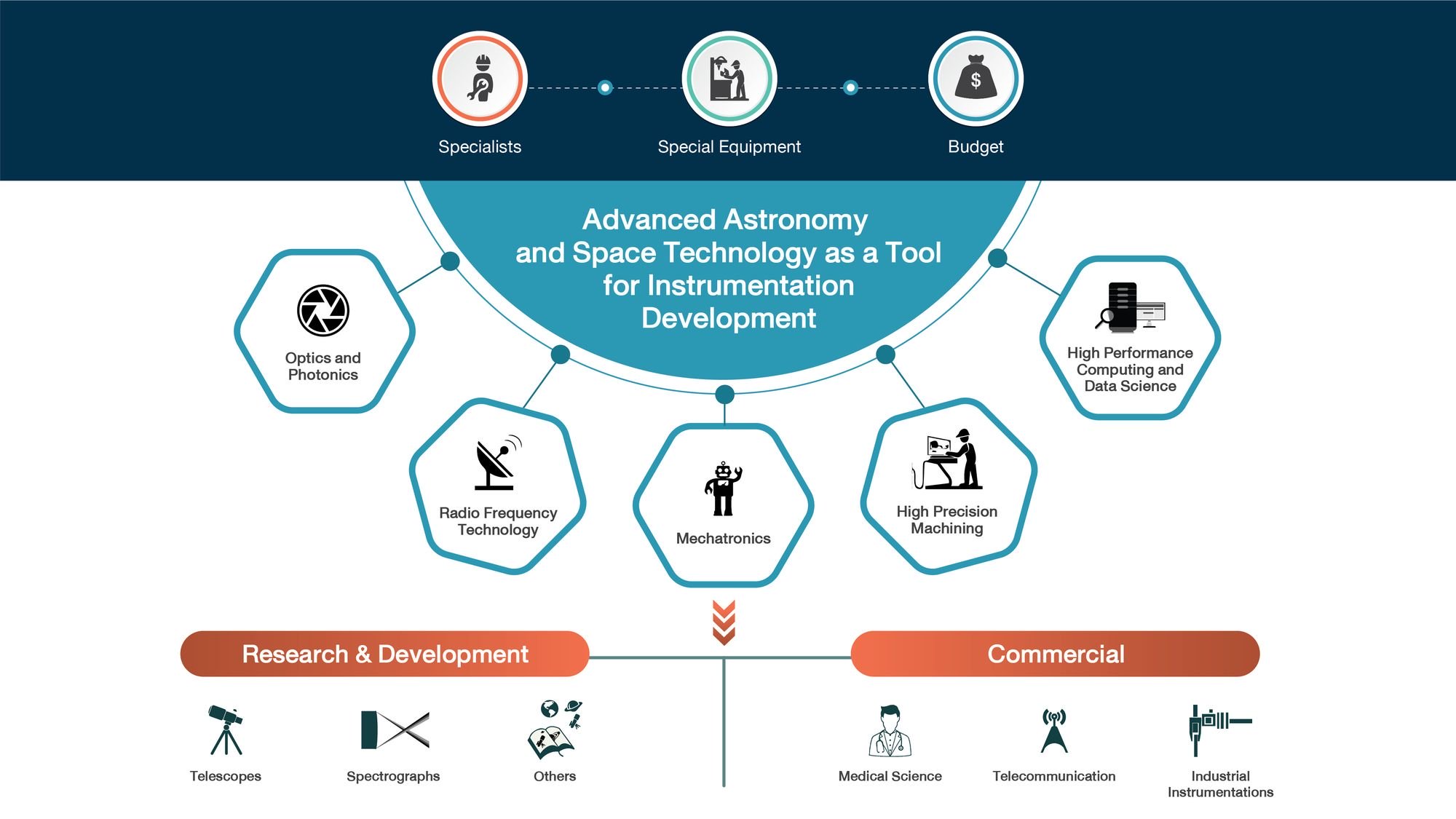
NARIT thrives to excel in research and engineering with the use astronomy with the goal of being able to design and build our own advanced astronomical instrumentation. For instance, space exploration requires space probes, fuels, orbital mechanics, and information technology which are all made possible by the knowledge gleaned from different disciplines of science for research, design and experiment. Before a space voyage can embark, any given challenges must be solved and new technological feats have been invented along the way.
NARIT, thus, aims at using astronomy to develop technology and human capacity building in order to elevate research and engineering to the level where advanced astronomical instruments can be designed and produced locally, reducing dependence on foreign technology. To this end, the institute has established the following highly sophisticated astronomical laboratories at Princess Sirindhorn AstroPark, Chiang Mai:
1) Optics and Photonics Laboratory;
2) Radio Frequency Technology Laboratory;
3) Mechatronics Laboratory;
4) High Procession Machining Laboratory, and;
5) High Performance Computing and Data Science Laboratory.
The knowledge and expertise gained in these laboratories are not benefiting limited to the field of astronomy but are also making merits to other areas in the ecosystem as a whole.
The following are ten of the most outstanding technological feats in astronomy that NARIT has been working on throughout the past decade:
Mirror Coating Technology
NARIT, along with Synchrotron Light Research Institute (Public Organization) and The Suranaree University of Technology, designed and developed a mirror coating chamber for 2.4-meter telescope mirror, the largest in Southeast Asia, which uses vacuum sputtering technology with the process of tailoring aluminum being placed in the chamber. The chamber is vacuum-sealed and the where aluminum is heated until it reaches melting point. Such heat causes the aluminum to evaporate and condense on the mirror, lying face up in the chamber, creating a thin layer of coating to increase reflectivity. In addition, the machine can be used to coat various metals, such as gold, copper, and silica for other industrial purposes.
After the success of coating the 2.4-meter telescope at the Thai National Observatory in 2015, the engineers and technicians involved were able to share the knowledge gained from the project to form a national consortium among four leading Thai organizations—NARIT, Synchrotron Light Research Institute (Public Organization), Chulalongkorn University, and Suranaree University of Technology—to design and develop another mirror coating machine for 6,000 mirrors with optimal reflectivity with at least a 6-year lifespan in arid conditions for use under this new frontier global consortium of Cherenkov Telescope Array (CTA) project.
2.4m Telescope Control System
The telescope at the National Observatory has been serving astronomers from locally and overseas for more than 215 nights every year since 2013. Some electronic components in the telescope-control system, such as motor control board and controller area network (CAN bus) have become outdated, resulting in concerns that replacement parts will be obsolete in the future. In response, the Centre of Observatory Operation and Engineering at NARIT is developing a telescope–control system for the 2.4-m telescope at the National Observatory to extend the life of the telescope for as much as over 30 years like other telescopes worldwide. Moreover, the updated version of the software and hardware system developed by the centre will help the telescope support current usage efficiently.
The process starts with the studying and reverse engineering of the telescope system. Each part in the structural components and the plan of the telescope- control system is thoroughly studied. Consequently, a 14-inch telescope replica of the 2.4 meter diameter one is created to establish a system model. All of the main parts, such as the motor and the sensor positions, are the same as the ones in the telescope at the National Observatory. However, the electronic components in the control system are updated which allow for a new control system with a newer design, more modern functionality, and greater accuracy than the former analogue one. Additionally, a more accurate, complete and responsive warning system is also in development.
Furthermore, software engineers at NARIT are also designing and developing an interface which is more user-friendly. Details such as placement, font size, controls and keyboard, sound, and light, are designed to facilitate information input, command, and data display. Other related systems, such as camera system, dome, lightning and computer are also being facelifted.
Robotic Telescope Network and Space Object Observation System
NARIT has conducted a programme to develop the Thai Robotic Telescope Network (TRT), which can be controlled remotely via the Internet. The network allows astronomers to observe deep–sky objects in the northern hemisphere and the southern hemisphere at all times. Teachers and students are given access to the network as part of the mission to foster teacher researchers and youth researchers alike. To support this initiative, the engineers at NARIT have developed and designed the network, focusing on providing access from external users and developing reporting, collection of data and display systems to allow for usage and data history monitoring via a web browser.
In addition, NARIT also studies and develops the Thai National Space objects Observation: TNSO by using a 0.7-m reflecting telescope in the investigation of near earth objects and space debris by National Observatory at Royal Air Force Reporting Post at Doi Inthanon, Chom Thong District, Chiang Mai as a prototype in the development of a telescope system control software that processes astrometry data. Certain software will be developed as a basic function to estimate the coordinates of operational satellites, space debris, and near-earth objects.
Currently the system is able observe space objects in every orbit: low-earth orbit, medium-earth orbit, and geosynchronous orbit with continuous tracking mode. To improve the system’s functionality, development in digital data processing, variable estimation, suitable controller, and signal processing through optics are planned. The data will be integrated into space traffic management to develop satellite emergency notification device as a national resource in the future.
Spectrograph
A spectrograph is an instrument used to measure the spectrum of a celestial body to gauge its physical properties, such as chemical components and relative motion. This instrument can also be utilised for other applications in chemistry, biology, security systems, agriculture, and remote control systems, etc. There are many types of spectrographs in astronomy, such as high resolution spectrograph and low resolution spectrograph, both of which are currently being developed by NARIT at its Optics and Photonic Laboratory. The instruments are expected to be installed to a 2.4-m Thai National Telescope, and smaller telescopes at Regional Observatories for the Public in the country and remotely controlled telescopes in the Thai National Telescopes Network.
- High Resolution Spectrograph
NARIT in cooperation with University of Hertfordshire, UK, designed and developed a prototype of EXOplanet high resolution SPECtrograph (EXOhSPEC), a small high – resolution spectrograph of which the spectral dispersion is over 70,000 (wavelength range 400-700 nm). It is used to detect planets beyond the solar system and study chemical component of stars. The prototype composes of the advanced collimator, in which the triplet lenses are modified to yield higher quality spectral pictures in a specific range.
Currently the prototype has been installed into the 2.4-m telescope at the Thai National Observatory and is being tested on common planets. The high resolution spectrograph is expected to be fully integrated with the telescope at the Thai National Observatory by 2021.
- Low Resolution Spectrograph
NARIT in cooperation with Chiang Mai University and King Mongkut’s University of Technology Ladkrabang developed a low resolution spectrograph based on a prototype designed by Prof. John Meaburn of the University of Manchester.
The prototype is comprised of a chromium slit, collimator, GRISMS and focus system with a spectral dispersion of 1,000 at a wavelength range or 400-800 nm. When installed in the telescope at the National Observatory, it provides a 3-arcmin diameter field of view.
Currently the spectrograph, with its mechanism and system for controlling and processing data, is being tested with the telescope at the Thai National Observatory and is expected to be fully integrated with the telescope by 2020. Moreover, between 2012 and 2025, more low resolution spectrographs will also be developed for various Regional Observatories for the Public.
Evanescent Wave Coronagraph and Adaptive Optics
NARIT is developing a new coronagraph called Evanescent Wave Coronagraph, or EvWaCo, for observing stars at near-infrared range and wavelengths visible to the naked eye. It can be used both on Earth and in the space to study and discover planets beyond the solar system as well as to observe binary quasars and galactic centers.
The EvWaCo instrument has two main components: 1. A newly designed mask to block out the glare of stars developed from a coronagraph prototype that can separate exoplanetary light from the object under observation with a difference of 10⁻⁶ (one in a million times) in the range of 10-20 Airy radius for single-wavelength unpolarised infrared; and 2. Adaptive optics technology to reduce the effect of atmospheric variation by using a tool to calculate and adjust the wave front with two adaptive mirrors that change shapes at a high frequency to generate very clear pictures limited only by diffraction. It is estimated that EvWaCo and adaptive optics will be applied with the telescope at the Thai National Observatory by 2025. After that the next model of coronagraph will be developed for use in a large telescope (6-8 meters in diameter) in a cooperation with foreign astronomy institutes.
Fourier Transform Spectrograph
NARIT, in cooperation with Suranaree University of Technology (SUT), developed a Fourier transform spectrograph to observe deep-sky objects. It is a technique that uses interference of light and the Fourier transform to measure the spectrum of a substance. The spectrograph has high spectral dispersion at visible wavelengths and near infrared ranges. It also processes 3D data on the object under observation, which allows astronomers to investigate stars and planets that are swelling or shrinking. A prototype was developed and installed to the 0.7-meter diameter telescope at the Regional Observatory for the Public, Nakhon Ratchasima.
Automatic Sky Observation System
Astronomy research requires access to information on whether atmospheric conditions are conducive to observation. Therefore, NARIT has developed equipment for automatic sky observation that combines several essential sensors to monitor the environment at observatories, such as visibility and brightness, which affect the quality of observation. This instrument enables the measurement of atmospheric conditions from temperatures between -40 and 65 ˚C, humidity between 1 to 100% RH, and wind speeds and direction between 1 and 300 km/h, precipitation by day, month, and year, and ultra violet light. The data is collected and computed, and the results are displayed in real time via a web browser. The user can set upper and lower limits in each data category, which will trigger alerts when conditions exceed the limit. Data collection and retroactive display are also supported.
High Precision Machining Technology
The Laboratory of High Precision Machining in NARIT is a source of innovation for complex, high precision astronomical instruments. The precision of its machining is under 30 microns. The laboratory designs and performs mechanical analysis to gauge and improve the quality of prototypes before actual production. A coordinate measuring machine is used to assess and assure the quality of the pieces. A document management system and part tracking are also available features. Moreover, aluminum anodising and power coating technology is supported to improve product appearance and quality.
Currently NARIT is collaborating with the Prostheses Foundation of HRH the Princess Mother to apply this high precision machining technology to the production of hip prostheses for those in need, replacing less durable older models with short life spans with stronger, lighter, and more efficient models. Prototypes are tested on real users and data collected for further improvement and development.
Big Data Analytics and Advance Computation
Throughout the decade, NARIT has obtained tremendous astronomical data which are important to present and future research. Consequently, the institute has established a High Performance Computing: HPC and National Astronomical Data Centre for the systematic and effective collection, storage, and retrieval of data.
The HPC called Chalawan High Performance Computing Cluster is used for research in astrophysics, cosmology, and space conditions. With this cluster, astronomers and other researchers are able to process complicated big data ranging from signal detection, which requires analogue modeling, to theoretical analysis and modeling in physics, which help astronomers study the process of natural phenomena from experiments and survey data.
NARIT’s research resources in 2019 included 600 CPU cores, 12 Tesla V100 NVLink General Purposed Graphic Processing Units (GPGPU) with 4 terabytes of RAM and a high speed cluster interconnect of 5.5 Gb/second, which supports Chalawan Cluster in calculating Rpeak at approximately 120 teraFLOPS (or 120 trillion calculations per second), and 400 terabytes of storage (Lustre file system).
The centre has designed and developed this database system to collect, store, and retrieve data from the Thai National Observatory, regional observatories, and remote observatories abroad. Moreover, a One-Stop Data Portal also facilitates the searching of astronomical data on a global database.
Radio Astronomy Network and Geodesy for Development
Main Infrastructure
- 40-m Radio Telescope
- 13-m Radio Telescope for Geodetic Science
- Advanced Engineering Centre
- Training and Development Centre
Collaborators
- Huai Hong Krai Royal Development Study Centre
- National Electronics Computer Technology Centre (NECTEC)
- Electrical and Electronics Products Testing Centre (PTEC)
- National Science and Technology Development Agency (NSTDA)
- Max Planck Institute for Radio Astronomy (MPIfR), Germany
- Korea Astronomy and Space Science Agency (KASI), Korea
- National Centre for Radio Astronomical Technologies and Geospace Applications, Spain
- National Astronomical Observatory of Japan (NAOJ), Japan
- Commonwealth Scientific and Industrial Research Organisation (CSIRO), Australia
Background
Thailand has seen a great leap forward for development in terms of astronomy in the past decades. It saw the first light of the Thai National Observatory, equipped with 2.4-m Thai National Telescope (TNT) in 2012. For that, it set a new benchmark in optical astronomy for the Southeast Asia region. However, there has also been an increasing demand for other branch of astronomy and astrophysics – Radio Astronomy as it plays an equally significant role in bridging the gap of Thailand’s astronomy and astrophysics and Southeast Asia alike.
Radio Astronomy plays a different role in detecting data from the skies. It employs radio telescopes to provide alternative views to optical telescopes as they can detect gases and areas of space that can be found obscured with cosmic dust. Unlike optical telescopes, which can be hindered by poor weather conditions on Earth and the Sun., radio telescopes, operating with signals at a longer wavelength, can be operated efficiently twenty-four-seven.
Development and Advanced Technology
Radio telescopes are typically similar to those antennas deployed in tracking and communicating with satellites, given that they are capable of detecting extremely weak radio waves , applying accurate steering and tracking system which allows for continuous observations of celestial objects with longer period of time. With great demands for advanced instruments required for radio astronomy, the development of Thailand’s very own technology is, therefore, immensely imperative for all parties in related disciplines especially in the areas of Microwave and Digital Engineering, High Electron Mobility Transister/Superconduction Tunnel Junction, Digital Processing Adapting Field-Programmable Gate Array, and High-speed and Big-data Technology.
Other Aspects of Radio Astronomy
-Global Geodetic Study
Radio telescopes are utilized in Geodesy for VLBI (Very Long Baseline Interferometry), which is the most accurate geodetic technique for determining both the terrestrial and celestial reference frames. This, in turn, helps us to determine Earth’s orientation in space. In recent decades, geoscientists have used the data delivered by this technique in scientific applications such as investigating the changing Earth. This sort of data is also a benefit to those involved, especially the Division of Geodesy and Geophysics, Royal Thai Survey Department governed by Royal Thai Armed Forces Headquarters where it is largely involved with the practical aspect of the determination of exact positions of points on Earth’s surface for mapping, satellite tracking, global navigation and military operations, just to name a few. Furthermore, the study of plate tectonics that leads to more understanding of geohazards such as earthquakes is also to be mutually shared among faculties of geodesy and survey engineering of local universities in Thailand.
- Atmospheric Science Study
Radio wave from celestial bodies transpires the atmosphere of Earth by changing the compositions of molecules such as water, oxygen and nitrogen. This leads to accurate study of atmosphere and water vapour measured over radio telescope station from which Royal Rainmaking Project and water and forest conservation management shall benefit.
Key Capabilities
- Frequency Coverage: UHF-115 GHz
- Sky Coverage: Phase Array Feed
- Timing Cadence: Latitude +18
- Pulsars and Transients
- Star Formation, Interstellar Medium, and Astrochemistry
- Large Scale Molecular Line Astronomy – from nearby cold dark clouds, the central molecular zone
- AGN Jet’s Variability (GPS:18.8531°N, 99.2200°E)
Thai National Radio Telescopes Specifications (40-m)
- “Updated” version of IGN’s 40-m Yebes Radio Telescope
- 40-m Paraboloid Antenna, Cassegrain-Nasmyth Optics
- 150 um (rms) overall Surface Accuracy
- Slew: Az 3m/s, EL 1m/s
Prime-Secondary Mechanism
Yebes Original Design
- Ku-band Rx Holographic Measurement
- >4 GHz (BW truncation)
Goals
- Closed loop switch
- +1 cryo-PAF or >4 GHz Rx with active focus positioning
- +1 Ku-band Rx for holographic measurement frequency agility, UHF to 115 GHz
Geodesy (13-m)
- Identical VLBI Principle with more (~mm, ~ps)
- <1mm accuracy for 1 year
- ~13m aperture
- Az:12 deg/sEL: 6 deg/s
- Wider bandwidth 2-14 GHz (8 Gbps)
- Data rate: (Petrachenko, et al. 2014)
8 hr (14.4 TB)/24 hr (2016)
24 ht (43.2 TB)/24 hr (2022)
- International VLBI Service for Astronomy and Geodesy (IVS)-> CRF, EOP, TRF
- Existing GNSS Geodetic Network
